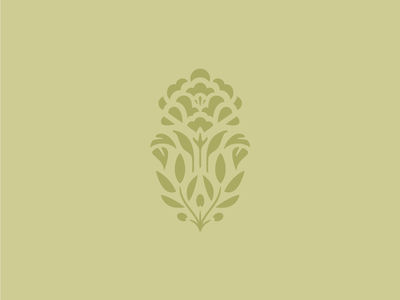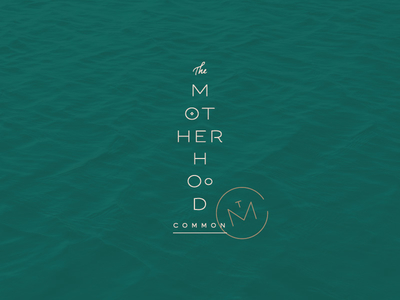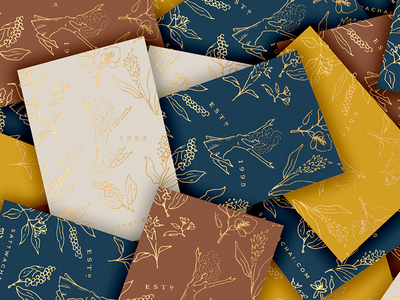As a designer, it’s usually standard to offer your clients multiple options when it comes to design solutions. The One Concept Approach is a relatively new idea that challenges this completely. Sound crazy? Well today, brand strategist and designer Melissa Yeager shares how using this new approach has completely changed her business for the better. We hope it’ll inspire you to rethink the way you work with clients or at the very least offer some insight on how you can improve your processes.

Like any other profession, it’s taken years of experience to transform me into the designer I am today. My college years taught me how to think and solve problems (and of course the ins and outs of design software). The first years of post-grad life were all about honing those skills, getting experience working with clients, and becoming more efficient with my work. However, it took another few years for me to figure out the best process for how I’d work with my clients.
Through my years of experience working with clients and trying different branding approaches, I’ve finally found the method that works wonders for both myself and my clients—The One Concept Approach. You may have heard about it before from Sean McCabe, but today I’ll be sharing my own take on this approach and why as a professional brand designer, I now swear by it.
The problem with options
Early on, projects involved me creating as many solid logo options as I could for my clients. However, with experience, I noticed that this led to more indecision from my clients, a seemingly endless cycle of “tweaks” and revisions, and left me feeling more like a puppet than a problem-solver.
Next, I transitioned to presenting three initial logo options with limited rounds of refinement. This seemed to work better, but I could tell that something was still off. I either felt that one was a stronger solution than the rest or all my ideas could reach farther if they could be united somehow.
The designer’s perspective
When I was creating multiple concepts or “options” for a client’s brand, my goal was to make each concept equally strong. This isn’t an impossible task, but let’s think about how this would actually work. If I distribute all my best ideas between three concepts, I’m effectively diluting an even stronger solution by spreading its magic out among the bunch. Now, three concepts represent a lesser degree of what one might have been.
Let’s face it—not all solutions are equal. If you need to create three or more solutions, the odds are that one or more of them may not be as strong in appearance and/or application. It may not be as versatile or speak to the target audience quite as well. The reality is that by giving clients these options, you’re giving them the opportunity to choose something other than what you know to be the best solution. Doesn’t seem very logical, does it?
The client’s perspective
Designers often blame clients for picking the weakest solution or the “lame duck,” but let’s take a step back here. In this scenario, the designer is the one framing the project so that this is the client’s time to choose. The designer is the one who’s putting the emphasis on the quantity of solutions rather than the quality, and the designer is the one presenting that lame duck as an option. Now that the client has all these solutions to choose from, it’s easy for him or her to forget the strategy and brand goals and kick into subjective mode.
All of a sudden, we’re picking favorites instead of solving the problem in the best way we can. From here, it’s not a far leap for clients to cherry-pick the things they like about each concept and ask to combine them. And why not? We’ve structured this process as a game of pick-and-choose so it’s really no wonder that the client chooses based on personal preference or ends up with a hodgepodge monster of our own making.
There’s a better way
For years I kept struggling with these issues over and over again—running headlong into the same walls. I knew there had to be a better way. I wanted the chance to create and present only my best work, only the solutions I was proud to stand behind. I wanted to ensure that I would be doing right by my clients and that I was solving the problems I was being hired to solve to the best of my abilities. Thankfully, I finally found the approach that changed everything.

The One Concept Approach
I first learned about The One Concept Approach from Sean McCabe. At first, I was skeptical. “Only present one logo or brand identity concept?! But this goes against everything I thought I knew about working with clients. This can’t be for real, can it?”
To be honest, most of my anxiety and hesitation stemmed from my own insecurity. Only presenting one concept would put a lot more pressure on me as the designer, but the whole idea seemed so beautifully brilliant that I took the time to learn more about it anyway. From learning came trying and from trying came believing.
How it works
Long before I ever start designing, I learn as much about my client’s business as I can and channel this information into a brand strategy. This guides all of our work together, like a roadmap for our collaboration. From this brand strategy, I dig into the design—exploring all kinds of different directions until I find the right one. Then, I push that as far as I possibly can.
Brand design shouldn’t start with logo designs. It should start with the research and strategy to create the right logo. And, it shouldn’t end with a logo either. My brand identities include a primary logo with multiple variations, color palette, custom patterns, secondary elements, social media assets, typographic recommendations, and even a few pieces of collateral.
Where presenting multiple concepts let me dip my toe into each direction, The One Concept Approach to brand identity design allows me to dive in much deeper and present a more immersive brand experience. As I’ve found out over the years, it’s all about the context and my clients can only get so much from a black and white logo floating on a page.
Why it works
My clients aren’t paying me to create options for them. They’re paying me to solve their problems and design the most strategically stunning and versatile brand I can. So instead of creating multiple decent options, I channel all of my creative energy into creating one solution that’s truly phenomenal.
It works because of years of experience, hours of research and strategy, and most importantly, a strong foundation of trust between my clients and me. While this approach involves presenting only one concept, it puts much more weight on that one concept and everything that precedes it. It works because I do the work up front to make sure this concept has the legs to take the brand where it needs to go. I still explore many directions early on, but narrow those down to the best solution and build that solution out into a more fully realized brand identity I know will work.
I become more of a believer in this approach every single day. I get to enjoy creating work I love, present only the best solutions that I’m proud to stand behind, and delight in knowing I’ve solved my clients’ problems the best way I know how. My clients are thrilled with the results, relieved that they can trust me to solve their problems, and confident that this strategically stunning identity is the right move for their business.

The One Concept Approach is a win-win for designers and clients alike. Now when clients approach me asking for “options” I know I’m not the right fit for them. I’m not here to create options, I’m here to solve problems beautifully well. For experienced designers, I urge you to try this approach. For clients looking to transform your brand, I encourage you to hire a designer you can trust—one who instead of creating multiple options for your business, will create the right solution.
This post was originally published on melissayeager.com/blog. Want to keep up with Melissa? Find her on Dribbble, Instagram, Twitter, and at melissayeager.com.
Find more Interviews stories on our blog Courtside. Have a suggestion? Contact stories@dribbble.com.











